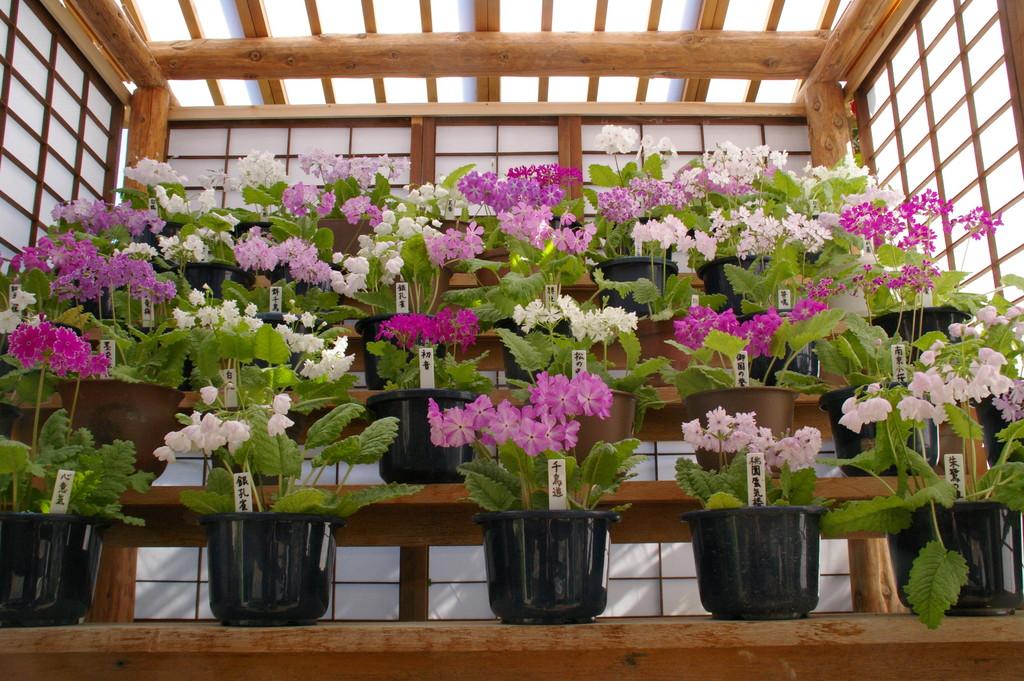Extract from Barnhaven's 1976 catalogue
Enjoy this wonderful extract from Willie Sinclair's 1976 catalogue.
'Introduced to England in the 1860s, the Japanese Star Primula soon became popular and it thronged the mighty conservatories over the next fifty years. It truly sparkled in the lamplight and peeped prettily through the ferns at many a lady with the after ball vapours being tended by her debonair beau, and at the turn of the century it rode high on the wave of Japanese mania that filled the parlours with bamboo tables with Japanese lacquer tops, goldfish swimming in big glass bowls and fire screens busy with fan-toting Geisha girls and cherry blossoms and irises and pagodas. After flowering, it would be humped out of the parlour and hidden in the shrubbery until the autumn, when it would be re-potted, brought inside again and stood on the windowsill with the geraniums until it bloomed.
Its career was ruined by the Kaiser. The milk white hands with the blue veins that once caressed piano keys through aching ballads now rolled patriotic bandages and served cups of tea to bright blue wounded soldiers in the stripped conservatories. There was no room for it by the goldfish in the parlour – the boys sat there in their silver frames with their rigid sepia smiles and their crossed legs wrapped in puttees. Primula sieboldii vanished into oblivion and the long strings of varieties disappeared from the nurserymen’s lists. But for an occasional flicker, it has remained deep in the shadows for the last half-century.
In Japan, it has been cultivated with fervour for centuries, grown in traditional hand-thrown pottery and displayed in traditional bamboo structures.
Photo courtesy of Sophie LeBerre.
With such a long history of confinement in pots, it was probably not realised that this primula is an almost indestructible hardy perennial, surviving the fiercest frosts and the most scorching droughts and rapidly forming large clumps in the garden. Of late there has been a great resurgence of interest the world over, and an avid horde of collectors has suddenly loomed over the horizon.
Flowers are poised polyanthus-fashion on wiry 9-12” stems and look like a multitude of butterflies dancing in the summer breezes over the light green, fern-like foliage. Leaves disappear in late summer and the plant busies itself underground until it emerges the following spring. During this period the roots and dormant buds sometimes climb out of bed. Tuck them in again with a light dressing of peat or leaf soil.
A woodlander in nature, it capers about happily and increases apace in a rich, moist, well-drained soil. Plant it among deciduous shrubs and trees, where it can enjoy the spring sunshine while it blossoms, and the dappled shade thereafter. Lift and tease the rhizomes apart every third year or so and discard the centre portion of the plant which is usually rotting away – the rhizomes march outwards, abandoning the old heart. October/November is the time for this operation. You can divide more often if you wish but the plant needs two undisturbed years to reach its glorious potential.
You can save some of the rhizomes for pot culture if you so wish. Use four to 5” pot and arrange the buds so that they point outwards from the centre. Use a loamless compost and grow cold or cool- too much warmth induces floppy growth. Feed at ten-day intervals when the plants break dormancy and until the buds form. After flowering, turn the plants out of their pots and grow on outside in dappled shade, if possible. Mulch with old cow manure or fertilized peat, and you can resume liquid feeding until plants go dormant. They should increase about six-fold in a season, with the exception of some of the blue shades which are rather slower to multiply.'

